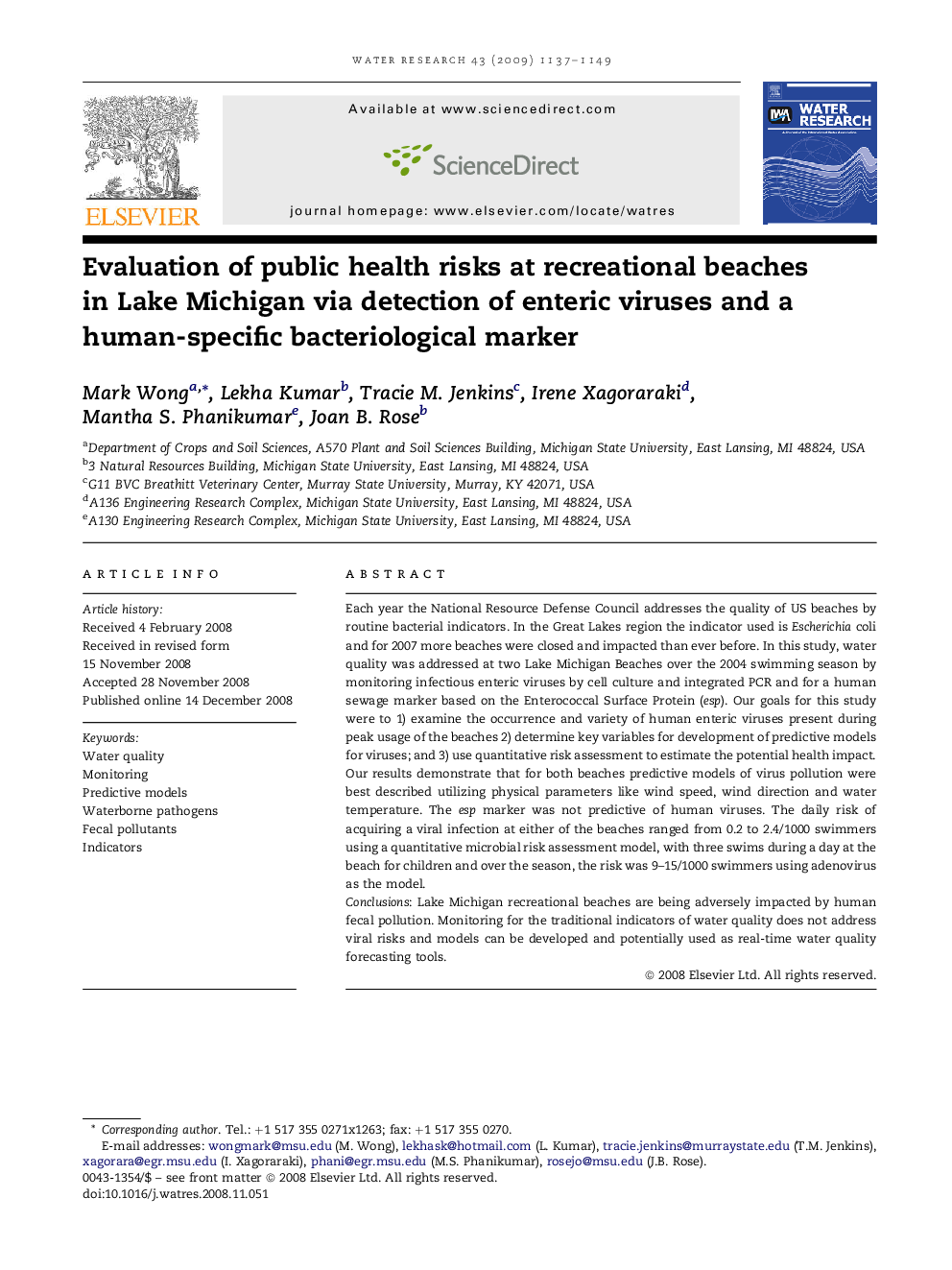| Article ID | Journal | Published Year | Pages | File Type |
|---|---|---|---|---|
| 4484392 | Water Research | 2009 | 13 Pages |
Each year the National Resource Defense Council addresses the quality of US beaches by routine bacterial indicators. In the Great Lakes region the indicator used is Escherichia coli and for 2007 more beaches were closed and impacted than ever before. In this study, water quality was addressed at two Lake Michigan Beaches over the 2004 swimming season by monitoring infectious enteric viruses by cell culture and integrated PCR and for a human sewage marker based on the Enterococcal Surface Protein (esp). Our goals for this study were to 1) examine the occurrence and variety of human enteric viruses present during peak usage of the beaches 2) determine key variables for development of predictive models for viruses; and 3) use quantitative risk assessment to estimate the potential health impact. Our results demonstrate that for both beaches predictive models of virus pollution were best described utilizing physical parameters like wind speed, wind direction and water temperature. The esp marker was not predictive of human viruses. The daily risk of acquiring a viral infection at either of the beaches ranged from 0.2 to 2.4/1000 swimmers using a quantitative microbial risk assessment model, with three swims during a day at the beach for children and over the season, the risk was 9–15/1000 swimmers using adenovirus as the model.Conclusions: Lake Michigan recreational beaches are being adversely impacted by human fecal pollution. Monitoring for the traditional indicators of water quality does not address viral risks and models can be developed and potentially used as real-time water quality forecasting tools.
